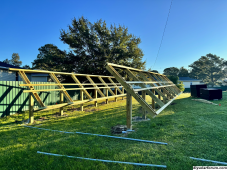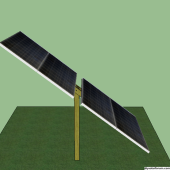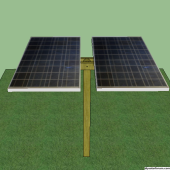dmkjr
Solar Enthusiast
Starting a 50 panel install for a friend in South Carolina. Will update as we progress through. Install is facing due south and it was designed to be able to tilt to different angles. We are using an 18k inverter from EG4, running about 350ft. I increased the required wire size to 8awg and each MPPT input will be running 430voc.
Running 1.25" conduit 36" deep to the garage where the hardware will be installed. There are two other structures on this property that we will eventually install another 50 panels to power.
Batteries are DIY 280ah (Seplos kit) x 48v (51.2) x 5 = 14.33kwh/per = 71.68kwh of energy storage.

Edit 1: We did take each array and break it down into a more manageable method of tilting. It will now tilt 8 panels per section.
While we planned on doing 50 panels, we are going to do 52 panels so we can do 26 panels per side and can have 13 in series, paralleled on each.
Running 1.25" conduit 36" deep to the garage where the hardware will be installed. There are two other structures on this property that we will eventually install another 50 panels to power.
Batteries are DIY 280ah (Seplos kit) x 48v (51.2) x 5 = 14.33kwh/per = 71.68kwh of energy storage.

Edit 1: We did take each array and break it down into a more manageable method of tilting. It will now tilt 8 panels per section.
While we planned on doing 50 panels, we are going to do 52 panels so we can do 26 panels per side and can have 13 in series, paralleled on each.
Last edited:




